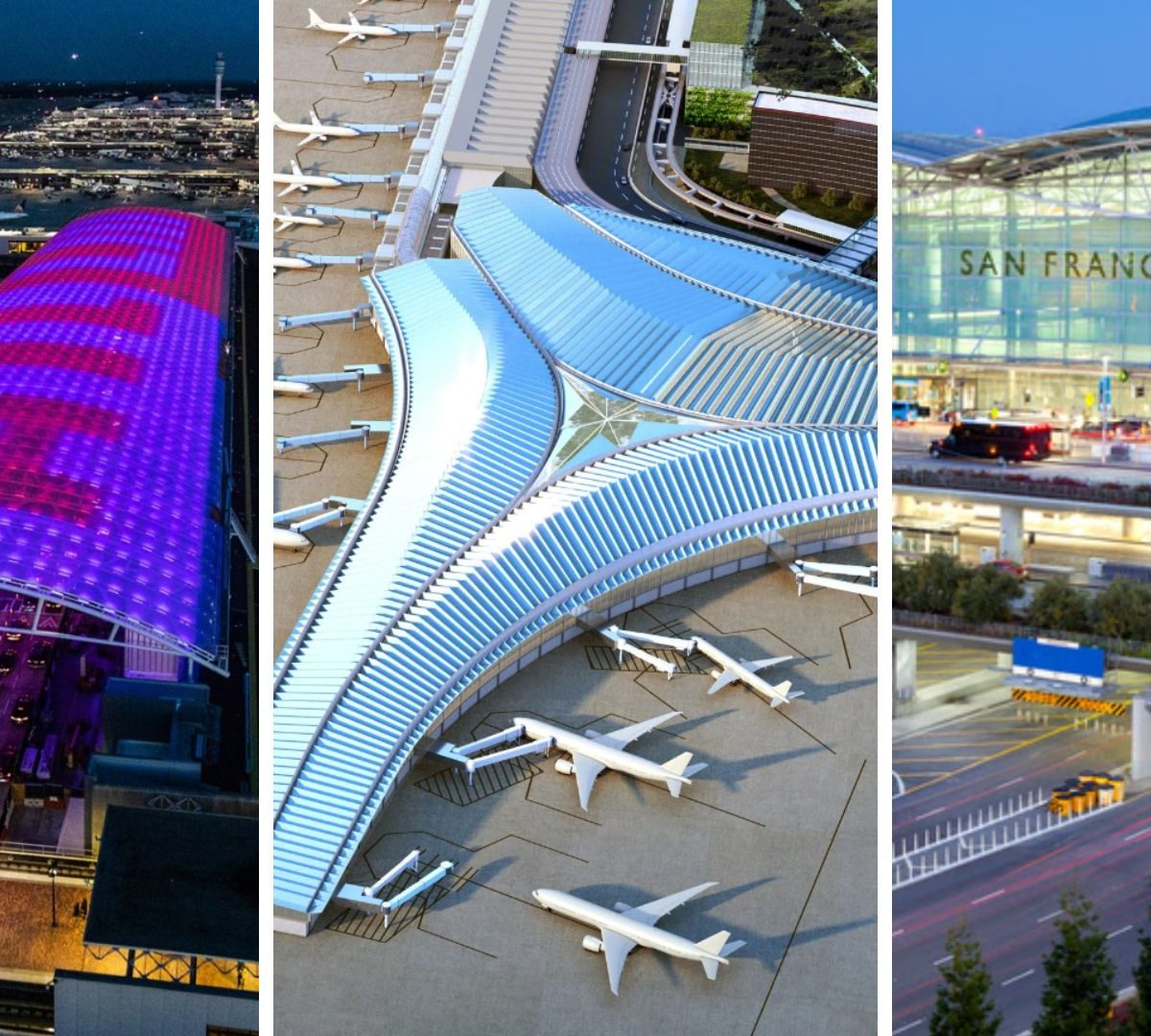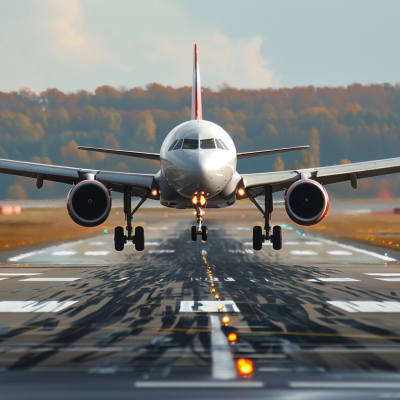In this blog post, we’ll explore the top 20 busiest airports in the US based on daily flight numbers.
As someone who has analyzed air traffic data for years, I can confidently say that these airports are the beating heart of the American aviation industry.
In 2023 alone, the busiest airport on our list handled an average of over 2,500 flights per day, a testament to the sheer volume of air travel in the country.
Whether you’re a frequent flyer or simply curious about the busiest hubs in the US, this post has you covered.
Let’s look at these bustling airports and what makes them so important to the nation’s transportation network.
Understanding the Ranking Criteria
We relied on data from multiple reputable sources to determine the busiest airports in the US. Here’s how we compiled and analyzed the information:
Data Sources
- Federal Aviation Administration (FAA) reports
- Airport traffic reports from individual airports
- Data from the Bureau of Transportation Statistics
Calculating Daily Flight Numbers
- Collected annual flight data for each airport
- Divided the annual flight count by 365 to obtain the average daily flight numbers
- Ranked airports based on the average daily flight numbers from highest to lowest
Using these criteria, we ensured that our ranking was accurate and based on the most up-to-date information.
Overview of the Top Busiest Airports: Highest to Lowest
1. Hartsfield-Jackson Atlanta International Airport (ATL), Atlanta, Georgia
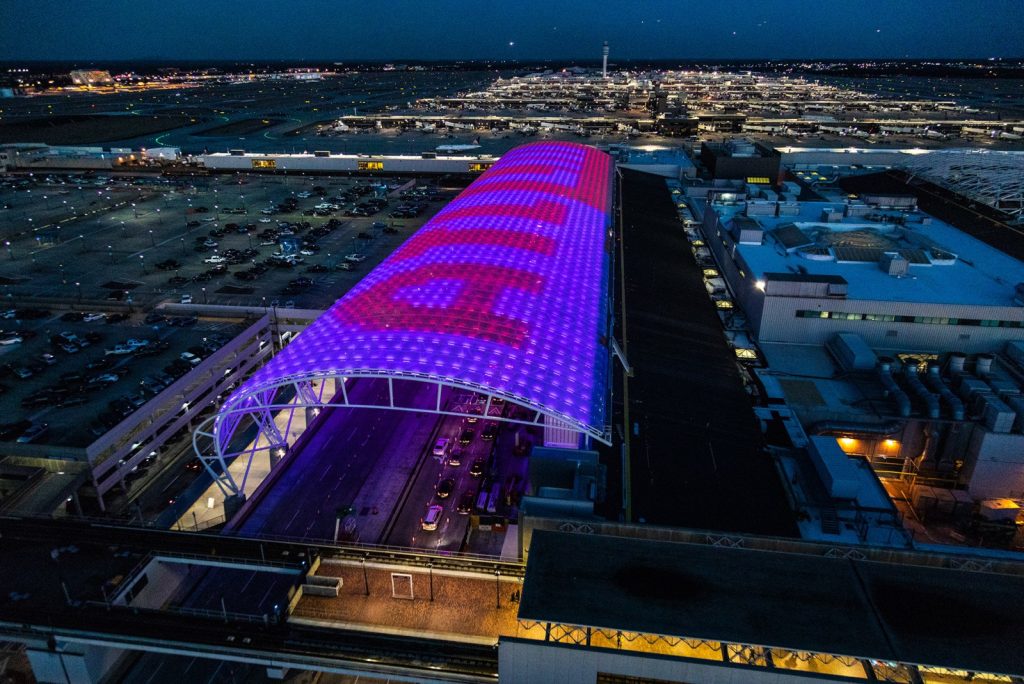
ATL handled an impressive average of 2,700 flights per day in 2023, solidifying its position as one of the world’s busiest airports.
Its strategic location and role as a major hub for Delta Air Lines contribute to the high volume of daily flights.
In 2023, ATL had 61,226,507 seats, a 12% increase from 2022 levels and only 3% below the pre-pandemic figures in 2019.
The airport’s ability to efficiently manage such many flights is a testament to its well-designed infrastructure and effective operational strategies.
ATL’s success is crucial to the economy of Atlanta and the surrounding region, as it connects businesses and individuals to destinations worldwide.
2. Dallas/Fort Worth International Airport (DFW), Dallas/Fort Worth, Texas

DFW recorded an average of 1,900 daily flights in 2023, playing a vital role in connecting passengers across the nation and around the globe.
The airport serves as a primary hub for American Airlines, further boosting its flight numbers.
In 2023, DFW offered 48,083,921 seats, an 11% increase from 2022 and a 10% increase from 2019, showcasing its strong recovery from the pandemic.
The airport’s central location in the United States makes it an ideal connecting point for cross-country and international flights.
DFW’s expansive infrastructure, including seven runways and five terminals, enables it to handle many daily flights efficiently.
3. Denver International Airport (DEN), Denver, Colorado
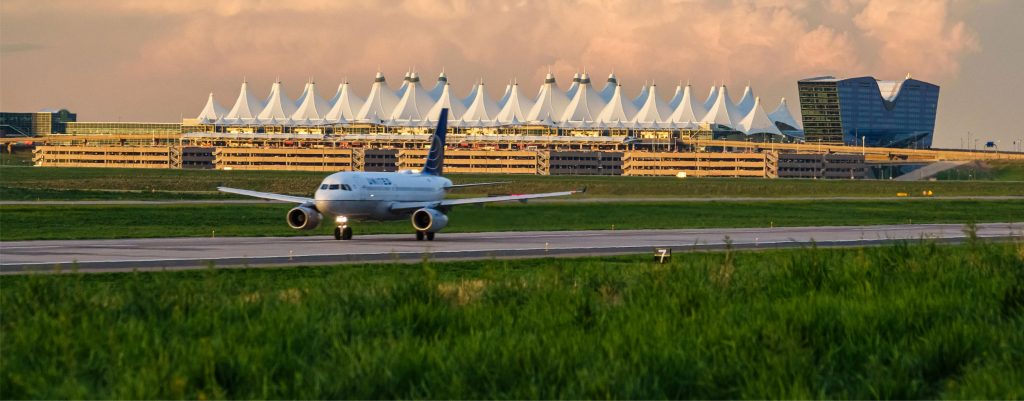
With an average of 1,700 flights per day, DEN is a crucial hub in the Mountain West region.
Its central location makes it an ideal connecting point for cross-country flights, contributing to its high flight volume.
In 2023, DEN offered 46,743,622 seats, a remarkable 13% increase from 2022 and a 17% increase from 2019, underlining its rapid growth and resilience.
The airport’s efficient layout, with six runways and three concourses, allows for smooth operations and minimal delays.
United Airlines operates a significant hub at DEN, offering over 450 daily departures to more than 150 destinations during peak seasons.
4. Los Angeles International Airport (LAX), Los Angeles, California
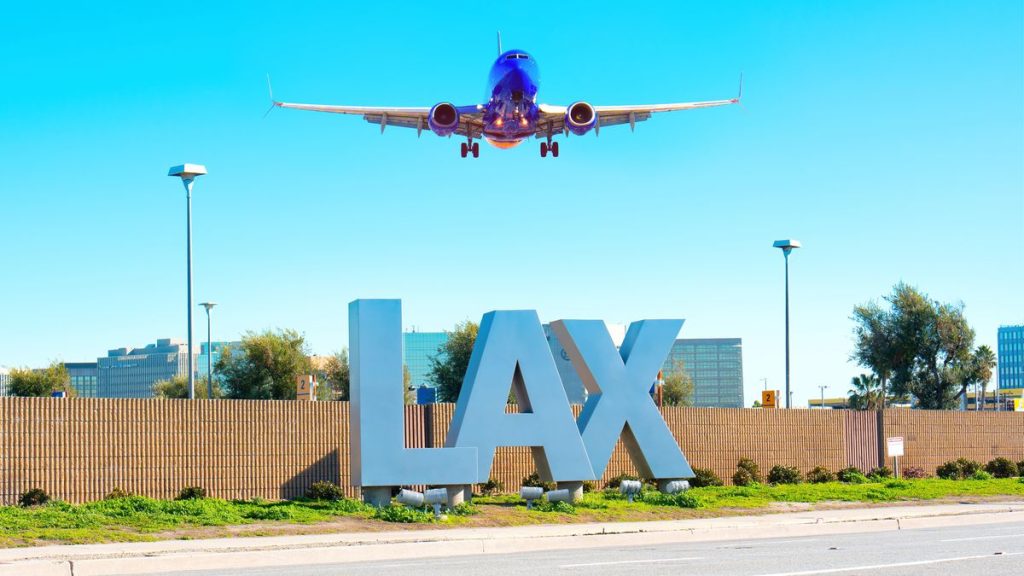
LAX witnessed an average of 1,600 daily flights in 2023, reflecting the high demand for air travel in the Los Angeles metropolitan area.
The airport has undergone major expansions to accommodate the growing number of passengers and flights.
In 2023, LAX offered 44,482,633 seats, an 11% increase from 2022 but still 14% below 2019.
The airport is a major gateway to the Asia-Pacific region and is a hub for several domestic and international airlines.
LAX’s ongoing modernization projects, including the Landside Access Modernization Program and the Midfield Satellite Concourse, aim to enhance the airport’s capacity and passenger experience.
5. O’Hare International Airport (ORD), Chicago, Illinois
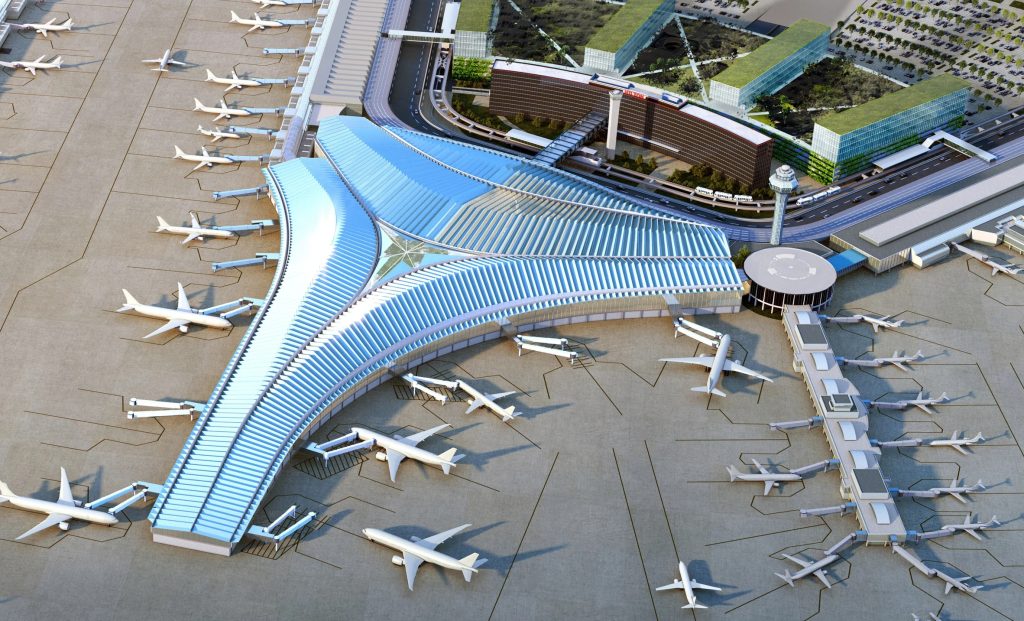
ORD handled an average of 1,550 flights daily in 2023, thanks to its key position in the national air transport network.
As a major hub for United Airlines and American Airlines, the airport plays a significant role in connecting passengers across the country.
In 2023, ORD recorded 43,708,796 seats, a 6% increase from 2022 but still 14% below 2019 figures.
The airport’s strategic location and extensive network of domestic and international routes make it a preferred choice for travelers.
ORD’s modernization plans, including the O’Hare 21 project, aim to increase the airport’s capacity and efficiency, ensuring its continued success in the years to come.
6. John F. Kennedy International Airport (JFK), New York, New York
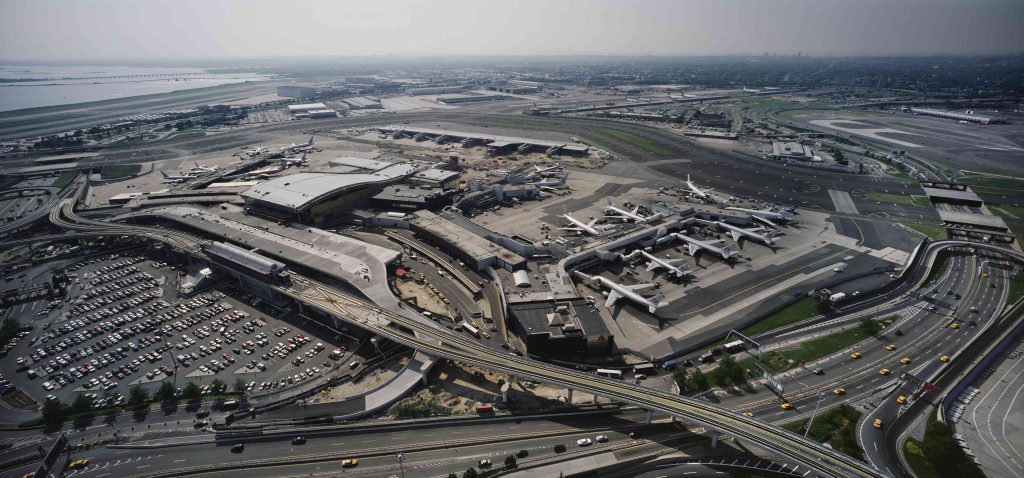
JFK, one of the main international gateways to the United States, recorded an average of 1,200 daily flights in 2023.
The airport is undergoing a massive $13 billion transformation to enhance its capacity and modernize its facilities.
In 2023, JFK handled 26.9 million passengers, demonstrating its importance in connecting the New York City area to the world.
The airport serves as a hub for Delta Air Lines and American Airlines, and it is a major base for international carriers such as British Airways, Emirates, and Lufthansa.
JFK’s strategic location and extensive route network contribute to its high flight volume.
7. Harry Reid International Airport (LAS), Las Vegas, Nevada

LAS, the primary Las Vegas Valley airport, handled an average of 1,150 daily flights in 2023.
The airport is crucial in supporting the region’s thriving tourism industry, attracting millions of visitors annually.
In 2023, LAS saw 25.5 million passengers, a testament to its importance in the region’s economy.
The airport’s efficient layout and modern facilities enable it to handle many flights and passengers.
LAS is a focus city for Southwest Airlines, Frontier Airlines, and Spirit Airlines, contributing significantly to its daily flight numbers.
8. Orlando International Airport (MCO), Orlando, Florida
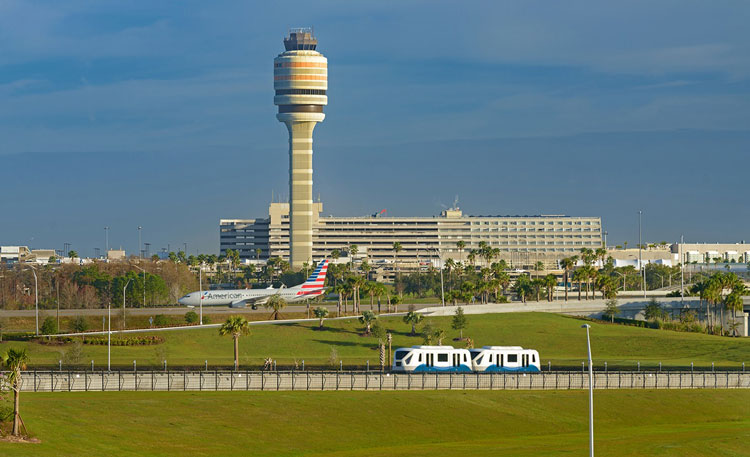
MCO, the busiest airport in Florida, recorded an average of 1,100 daily flights in 2023.
The airport is a major gateway to popular tourist destinations such as Walt Disney World, Universal Orlando, and SeaWorld Orlando.
In 2023, MCO handled 24.5 million passengers, reflecting the region’s strong demand for air travel.
The airport’s recent expansion, including the opening of Terminal C, has increased its capacity and improved the passenger experience.
MCO is a hub for Silver Airways and a focus city for Frontier Airlines, JetBlue Airways, and Southwest Airlines.
9. Miami International Airport (MIA), Miami, Florida
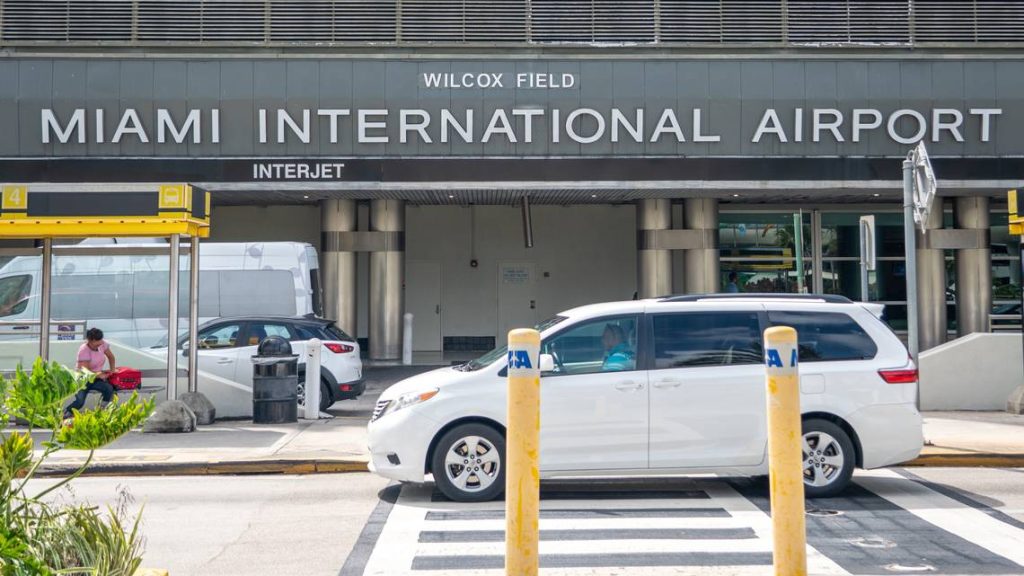
MIA, the primary airport serving the Greater Miami Area, handled an average of 1,050 daily flights in 2023.
The airport is a major gateway to Latin America and the Caribbean, making it a key player in international trade and tourism.
In 2023, MIA saw 23.9 million passengers, highlighting its role in connecting the region to the world.
The airport is a hub for American Airlines, which operates an extensive network of domestic and international routes from MIA.
The airport’s strategic location and modern facilities contribute to its success in handling a high volume of daily flights.
10. Charlotte Douglas International Airport (CLT), Charlotte, North Carolina
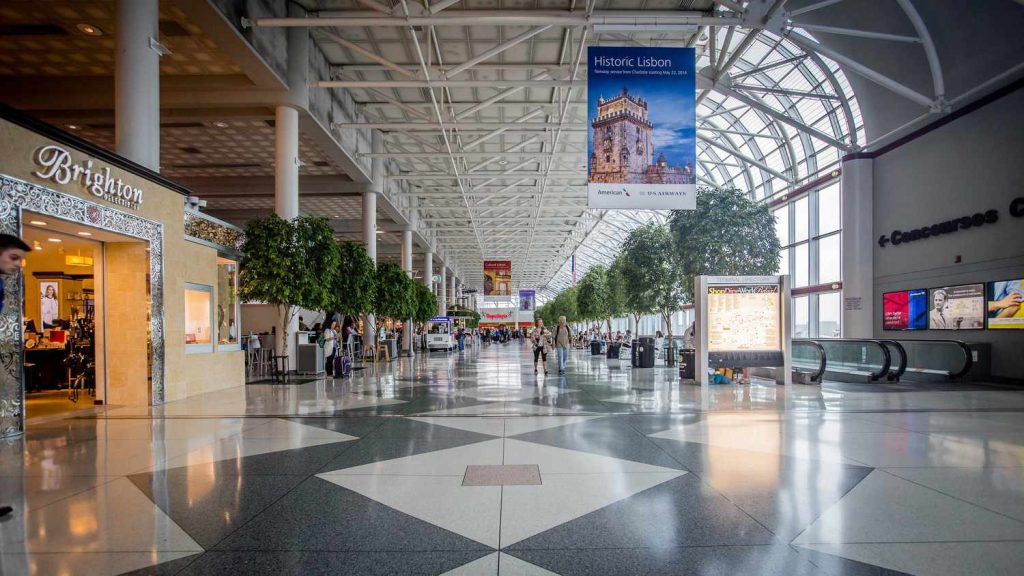
CLT, a major hub for American Airlines, recorded an average of 1,000 daily flights in 2023.
The airport’s strategic location in the southeastern United States makes it an important connecting point for domestic and international travelers.
In 2023, CLT handled 23.1 million passengers, underscoring its significance in the region’s air travel network.
The airport’s efficient layout and modern facilities enable it to manage a high volume of flights and passengers effectively.
CLT’s ongoing expansion projects, including constructing a new concourse and expanding its main terminal, aim to accommodate future growth and enhance the airport’s capacity.
11. San Francisco International Airport (SFO), San Francisco, California
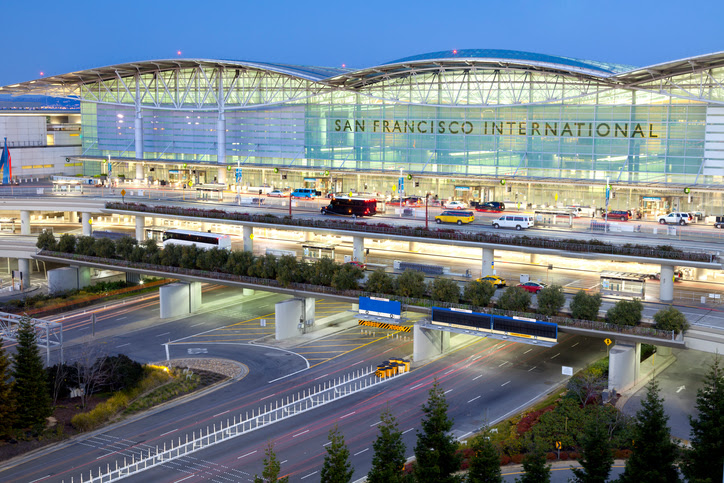
SFO, a major gateway to the Asia-Pacific region, recorded an average of 950 daily flights in 2023.
The airport serves as a hub for United Airlines and Alaska Airlines, connecting the San Francisco Bay Area to destinations worldwide.
In 2023, SFO handled 20.4 million passengers, reflecting the region’s strong demand for air travel. The airport’s modern facilities and efficient layout enable it to handle many flights and passengers effectively.
SFO’s ongoing modernization projects, such as renovating Terminal 1 and constructing a new air traffic control tower, aim to enhance the airport’s capacity and improve the passenger experience.
12. Seattle–Tacoma International Airport (SEA), Seattle, Washington
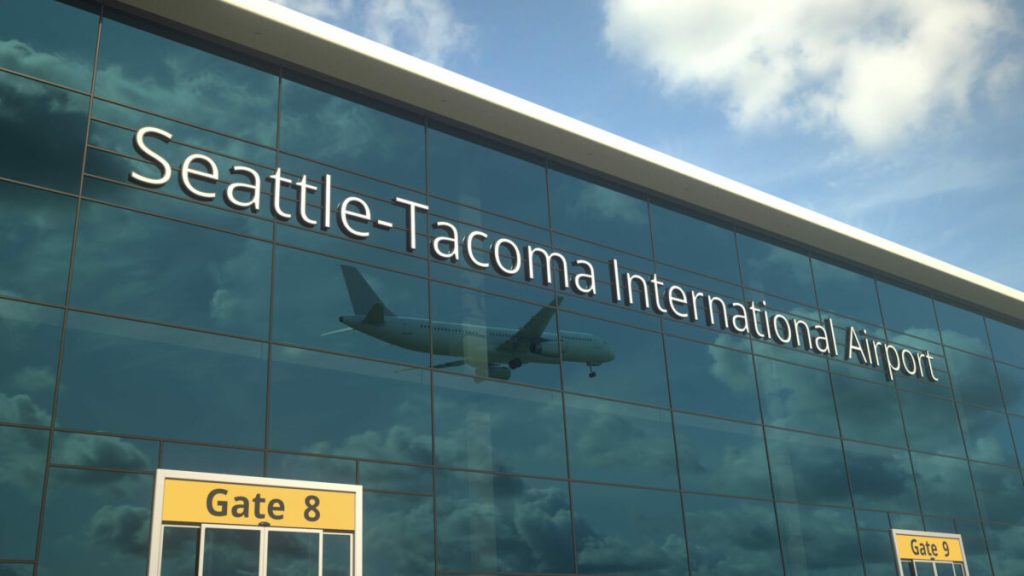
SEA, the primary airport serving the Seattle metropolitan area, handled an average of 900 daily flights in 2023.
The airport is a major hub for Alaska Airlines and a growing international gateway, connecting the Pacific Northwest to destinations worldwide.
In 2023, SEA saw 22.2 million passengers, demonstrating the region’s strong demand for air travel.
The airport’s efficient layout and modern facilities contribute to its success in handling a high volume of daily flights.
SEA’s ongoing expansion projects, including constructing a new international arrivals facility and modernizing its baggage handling system, aim to accommodate future growth and enhance the passenger experience.
13. Phoenix Sky Harbor International Airport (PHX), Phoenix, Arizona
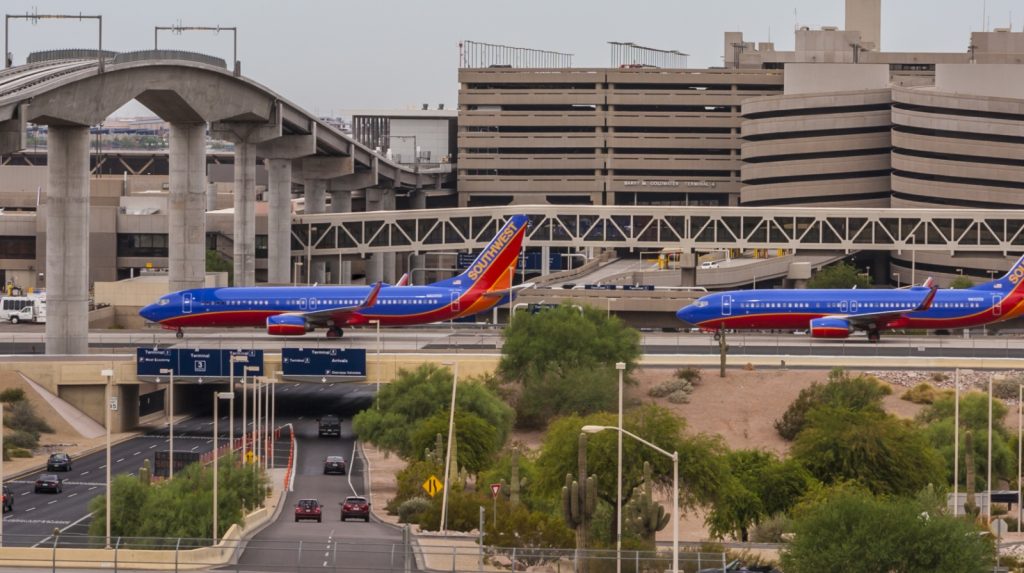
PHX, Arizona’s largest and busiest airport, recorded an average of 850 daily flights in 2023.
The airport is a major hub for American Airlines and Southwest Airlines, connecting Phoenix to destinations throughout the United States and beyond.
In 2023, PHX handled 21.9 million passengers, reflecting the region’s growing population and strong demand for air travel.
The airport’s modern facilities, efficient layout, and strategic location contribute to its success in handling a high volume of daily flights.
PHX’s ongoing modernization projects, such as the expansion of Terminal 4 and the construction of a new sky train system, aim to enhance the airport’s capacity and improve the passenger experience.
14. Newark Liberty International Airport (EWR), Newark, New Jersey
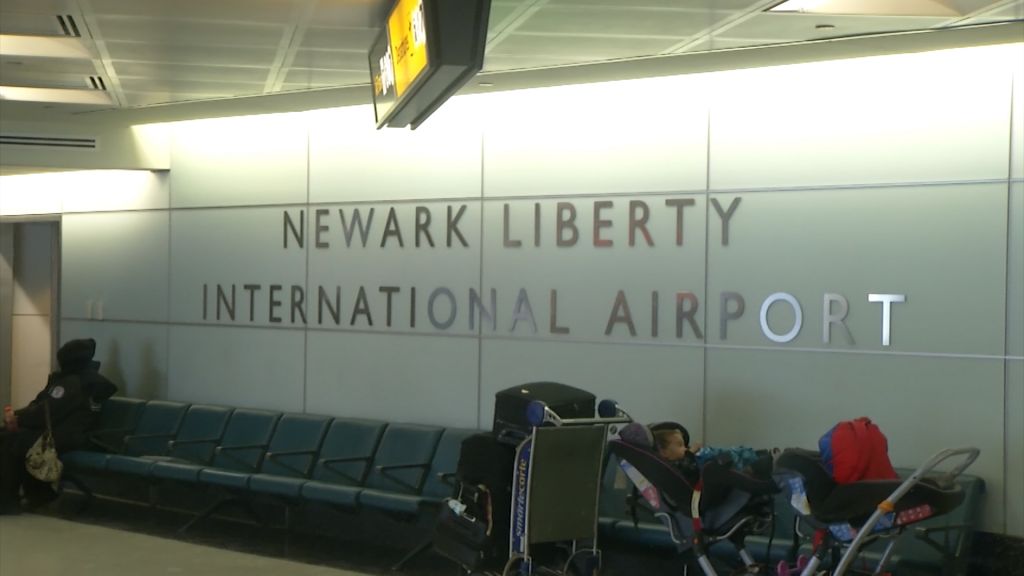
EWR, one of the three major airports serving the New York City metropolitan area, handled an average of 800 daily flights in 2023.
The airport serves as a major hub for United Airlines, connecting Newark to destinations across the globe.
In 2023, EWR saw 21.6 million passengers, highlighting its importance in the region’s air travel network.
The airport’s strategic location and modern facilities enable it to handle many flights and passengers effectively.
EWR’s ongoing modernization projects, such as the renovation of Terminal A and the construction of a new air traffic control tower, aim to enhance the airport’s capacity and improve the passenger experience.
15. Boston’s General Edward Lawrence Logan International Airport (BOS), Boston, Massachusetts
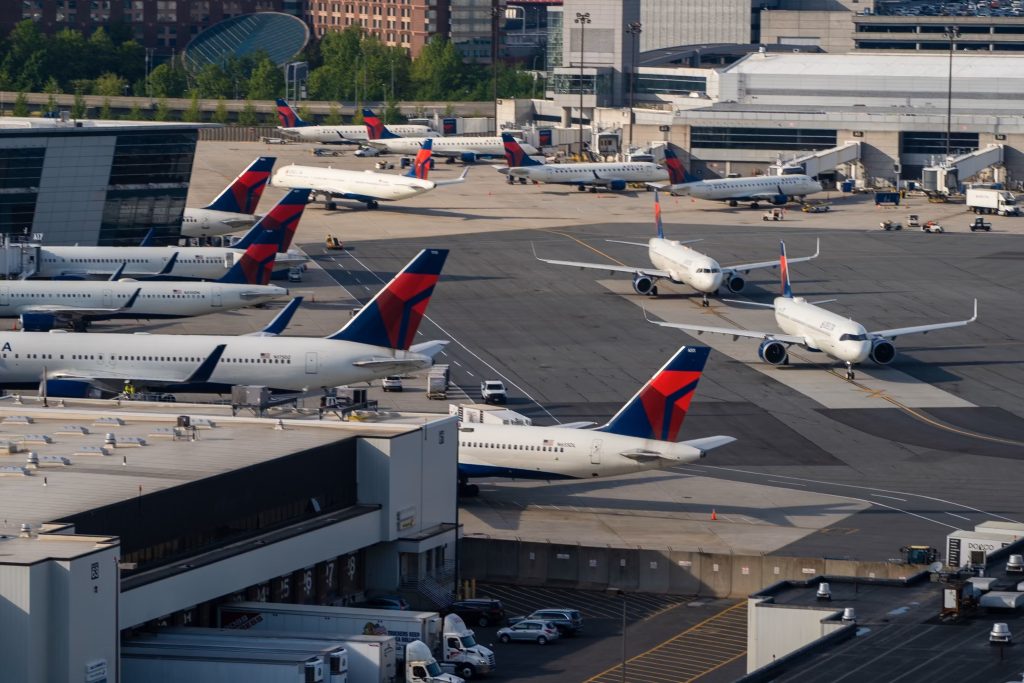
BOS, the primary airport serving the Greater Boston Area, recorded an average of 750 daily flights in 2023.
The airport is a major gateway to New England and a hub for Delta Air Lines and JetBlue Airways.
In 2023, BOS handled 17.4 million passengers, reflecting the region’s strong demand for air travel.
The airport’s modern facilities and efficient layout contribute to its success in handling a high volume of daily flights.
BOS’s ongoing modernization projects, such as expanding Terminal E and building a new parking garage, aim to accommodate future growth and enhance the passenger experience.
16. Fort Lauderdale/Hollywood International Airport (FLL), Fort Lauderdale, Florida
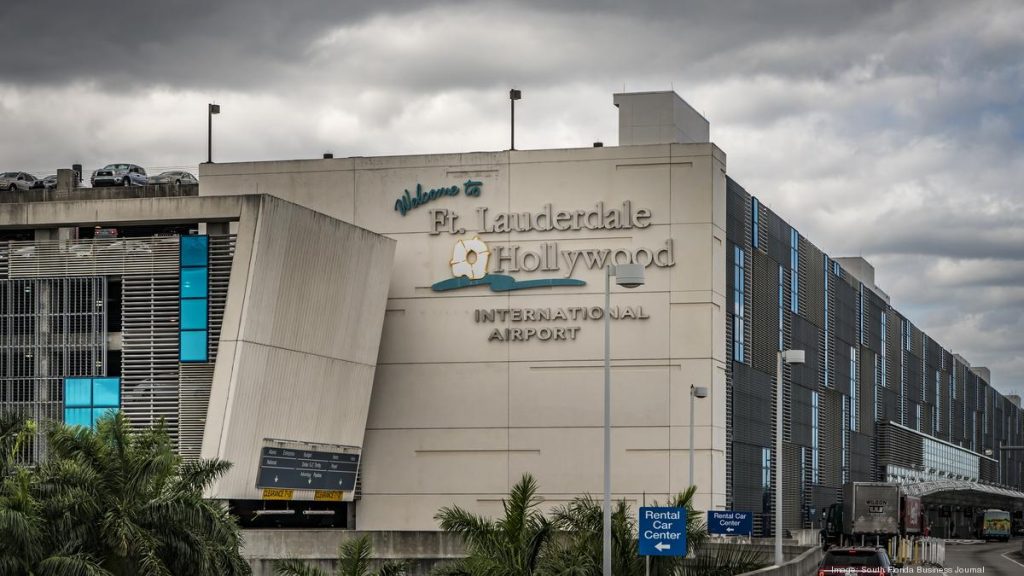
FLL, a major South Florida airport, handled an average of 700 daily flights in 2023.
The airport is a popular gateway for tourists visiting the area’s beaches and cruise ports.
In 2023, FLL saw 15.4 million passengers, demonstrating its importance in the region’s tourism industry.
The airport serves as a focus city for JetBlue Airways, Southwest Airlines, and Spirit Airlines, contributing significantly to its daily flight numbers.
FLL’s ongoing expansion projects, such as constructing a new runway and modernizing its terminals, aim to accommodate future growth and enhance the passenger experience.
17. Minneapolis–St. Paul International Airport (MSP), Minneapolis/St. Paul, Minnesota
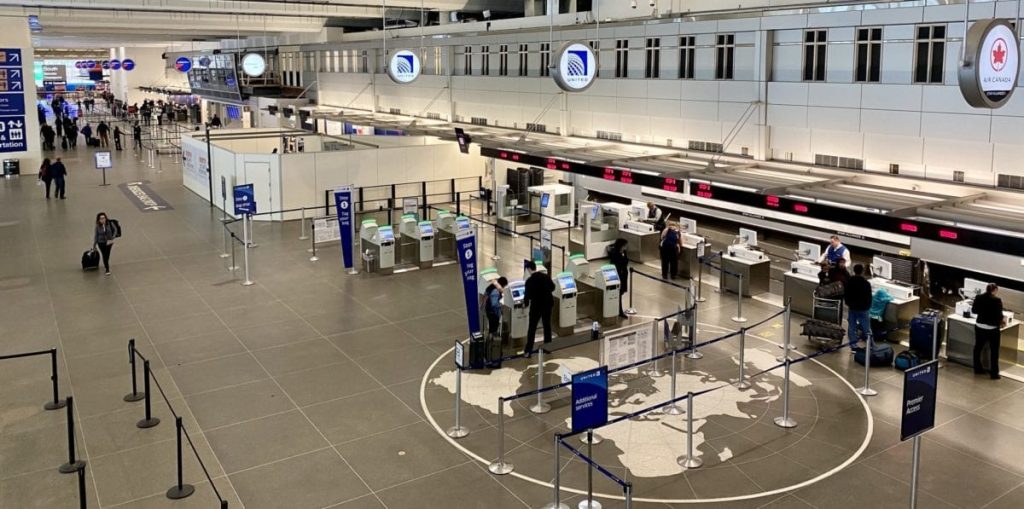
MSP, the largest and busiest airport in the Upper Midwest, recorded an average of 650 daily flights in 2023.
The airport serves as a major hub for Delta Air Lines and a focus city for Sun Country Airlines, connecting the Twin Cities to destinations across the United States and beyond.
In 2023, MSP handled 15.2 million passengers, reflecting the region’s strong demand for air travel.
The airport’s modern facilities, efficient layout, and strategic location contribute to its success in handling a high volume of daily flights.
MSP’s ongoing modernization projects, such as renovating Terminal 1 and expanding its parking facilities, aim to enhance the airport’s capacity and improve the passenger experience.
18. LaGuardia Airport (LGA), New York, New York
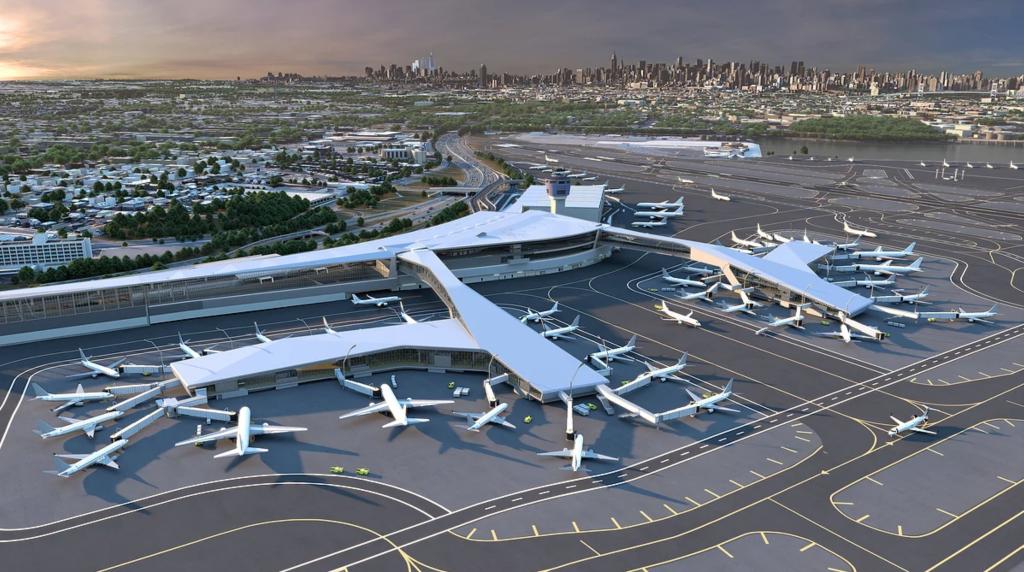
LGA, one of the three major airports serving the New York City metropolitan area, handled an average of 600 daily flights in 2023.
The airport primarily serves domestic destinations and is a focus city for American Airlines, Delta Air Lines, and Southwest Airlines.
In 2023, LGA saw 14.4 million passengers, highlighting its importance in the region’s air travel network.
The airport is undergoing a major redevelopment project, which includes the construction of new terminals, improved transportation access, and enhanced amenities to modernize its facilities and improve the passenger experience.
19. Detroit Metro Wayne County Airport (DTW), Detroit, Michigan
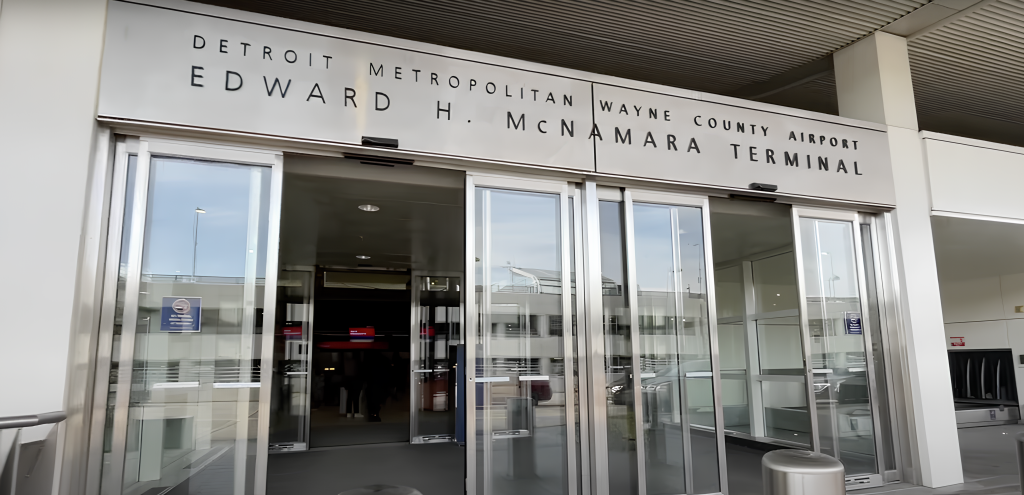
DTW, the primary airport serving the Detroit metropolitan area, recorded an average of 550 daily flights in 2023.
The airport serves as a major hub for Delta Air Lines, connecting Detroit to destinations across the globe.
In 2023, DTW handled 13.8 million passengers, reflecting the region’s strong demand for air travel.
The airport’s modern facilities, efficient layout, and strategic location contribute to its success in handling a high volume of daily flights.
DTW’s ongoing modernization projects, such as renovating its terminals and expanding its parking facilities, aim to enhance the airport’s capacity and improve the passenger experience.
20. George Bush Intercontinental Airport (IAH), Houston, Texas
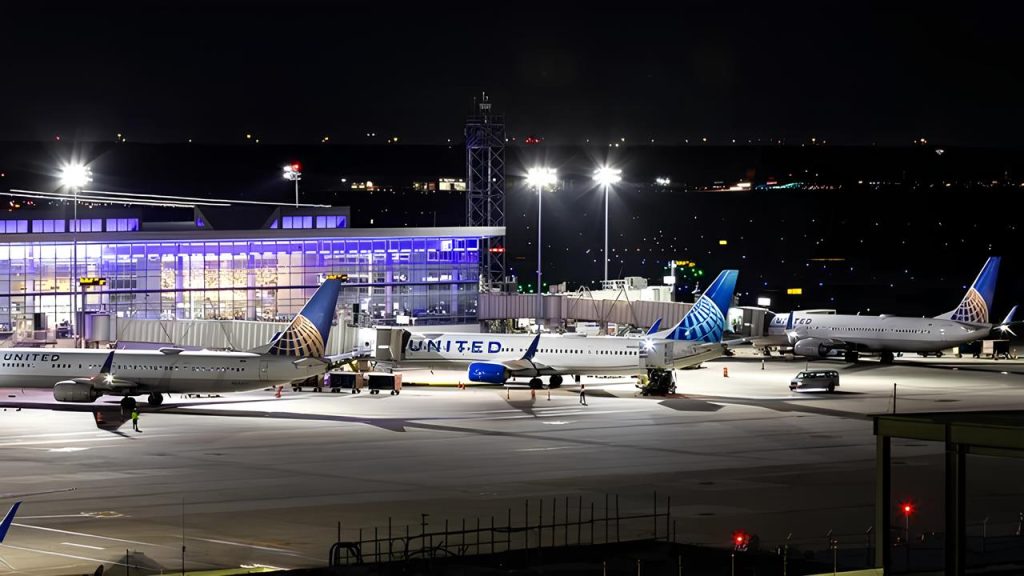
IAH, the largest and busiest airport in the Houston metropolitan area, handled an average of 500 daily flights in 2023.
The airport serves as a major hub for United Airlines and a focus city for Spirit Airlines, connecting Houston to destinations across the United States and worldwide.
In 2023, IAH saw 19.8 million passengers, demonstrating the region’s strong demand for air travel.
The airport’s modern facilities, efficient layout, and strategic location contribute to its success in handling a high volume of daily flights.
IAH’s ongoing modernization projects, such as constructing a new international terminal and expanding its cargo facilities, aim to accommodate future growth and enhance its capacity.
The Impact of Technological Advances on Flight Operations and Passenger Handling
The aviation industry has witnessed significant technological advancements in recent years, greatly influencing flight operations and passenger handling at the busiest airports in the US.
Some of these advancements include:
- Automated baggage handling systems: These systems streamline the process of sorting and transporting luggage, reducing the likelihood of lost or delayed bags and improving overall efficiency.
- Biometric technology: Airports are increasingly adopting biometric technology, such as facial recognition, to expedite the check-in, security, and boarding processes, leading to shorter wait times and enhanced security.
- Mobile apps and digital platforms: Many airports have developed mobile and digital platforms that allow passengers to access real-time information about flight status, gate changes, and amenities, improving the overall passenger experience.
- Air traffic control modernization: Upgrades to air traffic control systems, such as NextGen technology, have enabled airports to handle more flights with greater precision and safety, reducing delays and improving efficiency.
These technological advancements have played a crucial role in helping the busiest airports in the US manage their high volume of daily flights while providing a more seamless and convenient experience for passengers.
Top 10 Busiest U.S. Airports by Daily Flight Numbers and Annual Passengers in 2023
| Rank | Airport Name | Location | Average Daily Flights | Total Annual Passengers |
|---|---|---|---|---|
| 1 | Hartsfield-Jackson Atlanta International (ATL) | Atlanta, Georgia | 2,500 | 61,226,507 |
| 2 | Dallas/Fort Worth International (DFW) | Dallas/Fort Worth, Texas | 1,900 | 48,083,921 |
| 3 | Denver International (DEN) | Denver, Colorado | 1,700 | 46,743,622 |
| 4 | Los Angeles International (LAX) | Los Angeles, California | 1,600 | 44,482,633 |
| 5 | O’Hare International (ORD) | Chicago, Illinois | 1,550 | 43,708,796 |
| 6 | John F. Kennedy International (JFK) | New York, New York | 1,200 | 26,900,000 |
| 7 | Harry Reid International (LAS) | Las Vegas, Nevada | 1,150 | 25,500,000 |
| 8 | Orlando International (MCO) | Orlando, Florida | 1,100 | 24,500,000 |
| 9 | Miami International (MIA) | Miami, Florida | 1,050 | 23,900,000 |
| 10 | Charlotte Douglas International (CLT) | Charlotte, North Carolina | 1,000 | 23,100,000 |
External Factors Influencing Flight Numbers
In addition to technological advancements, several external factors can influence flight numbers at the busiest airports in the US. These factors include:
- Economic conditions: The state of the economy can significantly impact air travel demand. Business and leisure travel increase during economic growth, leading to higher flight numbers. Conversely, economic downturns can reduce air travel demand and lower flight numbers.
- Regulatory changes: Changes in government regulations, such as those related to security measures, visa requirements, or airport operations, can affect flight numbers. For example, new security protocols may require additional time for passenger screening, leading to potential delays and reduced flight capacity.
- Fuel prices: Fluctuations in fuel prices can impact airline operating costs, which may influence decisions related to route planning and flight frequency. Higher fuel prices may lead airlines to consolidate flights or reduce service on less profitable routes, affecting airport flight numbers.
- Global events: Major global events, such as pandemics, natural disasters, or political instability, can significantly impact air travel demand and flight numbers. For instance, the COVID-19 pandemic dramatically reduced air travel, forcing airports and airlines to adapt to unprecedented circumstances.
By understanding these external factors, airport authorities and airlines can better anticipate and respond to changes in flight numbers, ensuring the continued efficiency and success of the busiest airports in the US.
Conclusion
The top 20 busiest airports in the US play a vital role in connecting people and businesses across the country and around the world.
From the bustling hubs of ATL and DFW to the major international gateways like JFK and SFO, these airports handle an astonishing number of daily flights, ensuring the smooth flow of passengers and goods.
As technology advances and external factors continue to shape the aviation industry, these airports must adapt to maintain their efficiency and competitiveness.
Looking ahead, ongoing modernization projects and strategic planning will be crucial in accommodating the anticipated growth in air travel demand.
Whether you’re a frequent flyer or fascinated by aviation, understanding the significance of these bustling airports is key to appreciating the complex and dynamic nature of air transportation in the United States.


